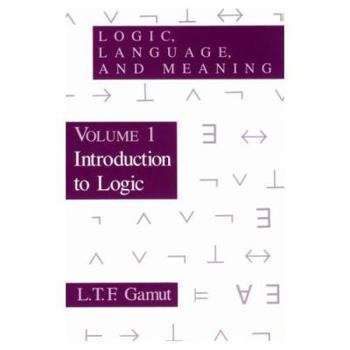Logic, Language, and Meaning, Volume 1: Introduction to Logic
Although the two volumes of Logic, Language, and Meaning can be used independently of one another, together they provide a comprehensive overview of modern logic as it is used as a tool in the analysis of natural language. Both volumes provide exercises and their solutions. Volume 1, Introduction to Logic, begins with a historical overview and then offers a thorough introduction to standard propositional and first-order predicate logic. It provides both a syntactic and a semantic approach to inference and validity, and discusses their relationship. Although language and meaning receive special attention, this introduction is also accessible to those with a more general interest in logic. In addition, the volume contains a survey of such topics as definite descriptions, restricted quantification, second-order logic, and many-valued logic. The pragmatic approach to non-truthconditional and conventional implicatures are also discussed. Finally, the relation between logic and formal syntax is treated, and the notions of rewrite rule, automation, grammatical complexity, and language hierarchy are explained.
Format:Paperback
Language:English
ISBN:0226280853
ISBN13:9780226280851
Release Date:December 1990
Publisher:University of Chicago Press
Length:296 Pages
Weight:0.93 lbs.
Dimensions:0.7" x 6.1" x 9.0"
Customer Reviews
1 rating
Very Inspiring and Accessible
Published by Thriftbooks.com User , 15 years ago
The volume 1 of Logic, Language and Meaning is truly an amazing and inspiring reading for students of applied logic. This book introduces the reader to many of the fundamental concepts of logic and meaning. The mathematics is elegantly, simple in such a manner that makes it accessible to all kinds of scholars. The authors are particularly careful in explaining how the interplay between mathematical logic and linguistics can affect the semantics of verbal constructions. Organizational scholars will find this book especially useful in terms of how it benefits the "theorizing paradigm" in the field. Considering how often organizational scholars derive and test verbal (worded), propositional statements, this book provides a more rigorous and intuitive approach to the process of verbal theorizing. Although, this book can be applied in many ways to organizational scholarship, one notable application is towards the process of resolving seemingly competing hypotheses. For instance, the transparency of first order logic (a subject matter of this book) provides the author/reader with the ability to systematically, tease out nuances of a given generalized theorem.





